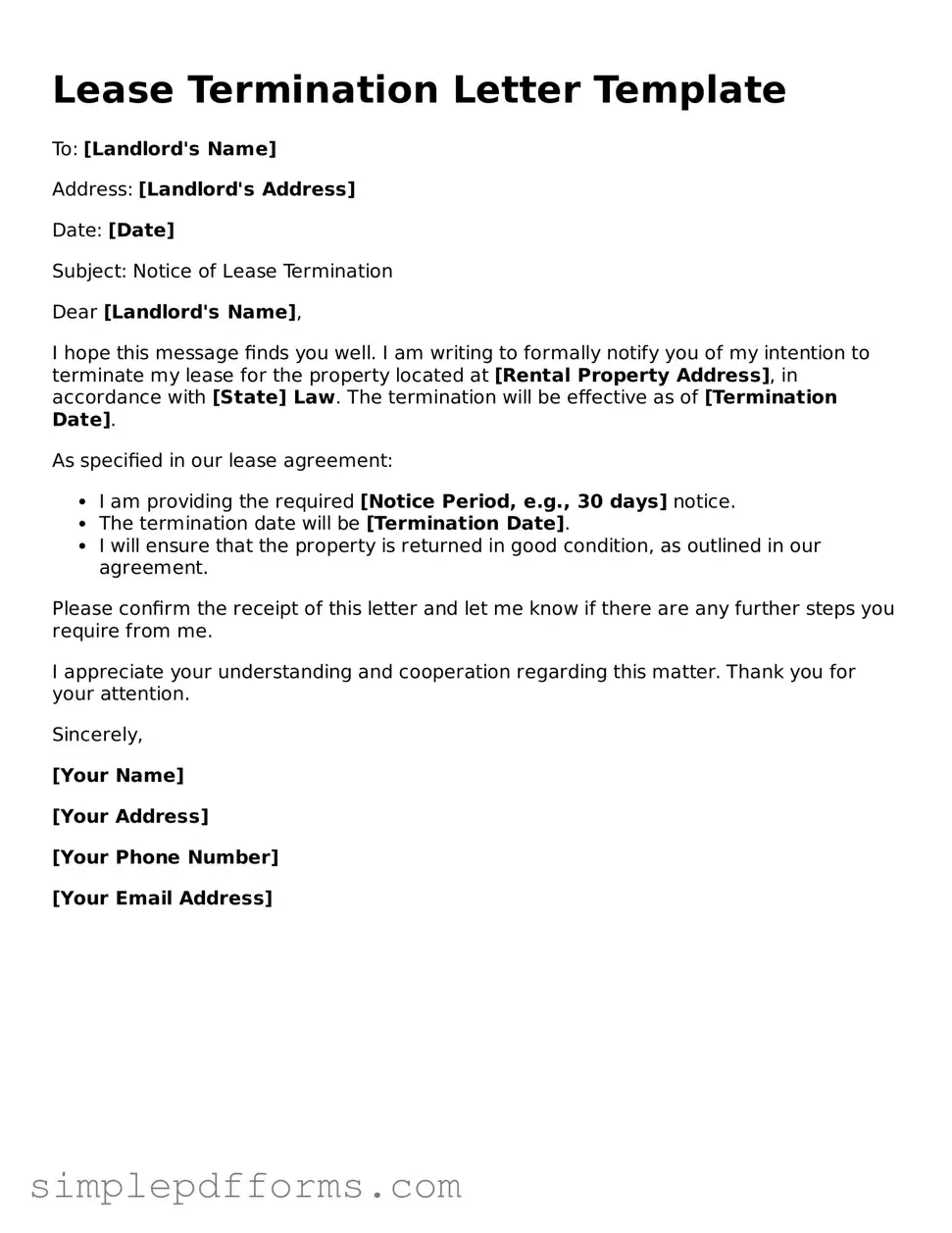Free Lease Termination Letter Form
A Lease Termination Letter is a formal document used by tenants or landlords to communicate the intent to end a lease agreement. This letter outlines the reasons for termination and specifies the date the lease will conclude. Properly completing and sending this form ensures that both parties are aware of their rights and responsibilities during the termination process.
Open Lease Termination Letter Editor Now
